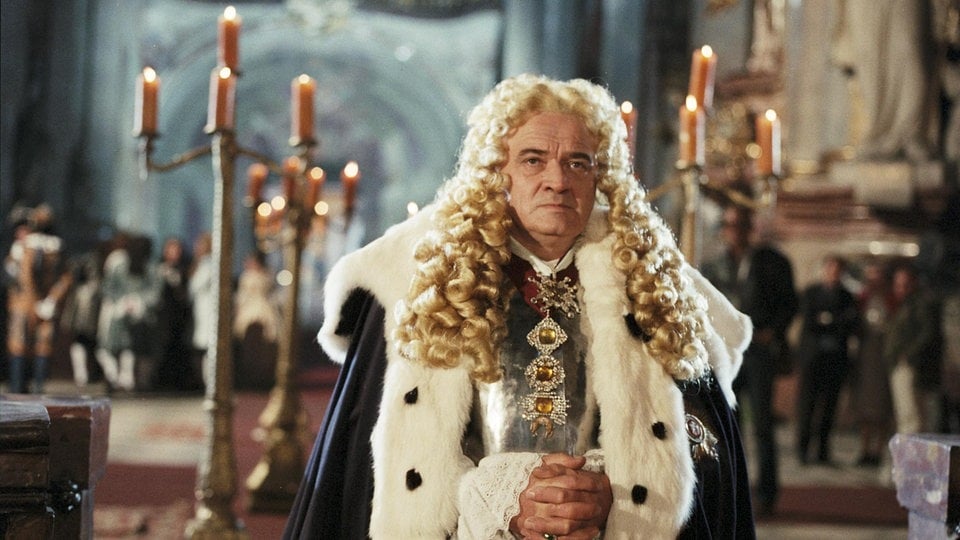Truth and poetry
The television princes of the GDR are not immediately convinced of the material, as the experienced television dramaturge Börner recalls. After all, instead of residences, there have long been GDR districts, the nobility has been abolished, and in the early 1980s the Dresden residential palace still looks like a ruin, as if to prove it. However, at this time the Politburo was reflecting on Prussian virtues and representative buildings. Old Fritz returns to his place on Unter den Linden, and the French and German Domes are extensively renovated. The war-damaged city palace opposite was blown up in 1950, but its own palace was built on the spot.
–
Perhaps it helped to give progressive traits to aristocratic history. Screenplay writer Börner invents the rebellious chamberlain Heinrich von Watzdorf and introduces him as a kind of enlightener into feudal history. Watzdorf’s life only lasted for a short time and ended tragically: After publicly denouncing the royal family for warmongering and wastefulness, he ended up at Königstein Fortress, where he was finally thrown down from the tower. In retrospect, however, Börner wants his character to be understood as follows: “Enlightenment is an explosive for all absolutist forms of rule. And for dogmatic systems of thought.” From his point of view, some of the things in “Sachsens Glanz und Preussens Gloria” were “definitely related to the present”.
–
Brühl, do I still have money? (…) Naturelemont, your Majesty only ever need to give orders.
–
–
How to create baroque splendor?
The scriptwriter and director work on the script for three years and then have to wait another year and a half until DEFA has the budget together. Finally, in private notes, Kasprzik complains more and more desperately about the elapsing time and creativity. In 1983 the time had finally come: Kasprzik wanted to film the Saxony-Prussia saga in the most authentic places possible. But baroque Dresden no longer exists in the hail of bombs of the Second World War it went under. Only a few original locations such as the Hofkirche, Stallhof or Brühlsche Terrassen can be used as a backdrop. Further sets can be found in Bautzen and Görlitz, at Pillnitz Palace, Moritzburg or Stolpen, but also in Potsdam-Sanssouci.
–
In Moritzburg, August the Strong was supposed to hold one of his famous feasts. During this shoot there was everything an Eastern heart could desire. Tropical fruits and everything that was otherwise not available. The mean thing: the blackboard was set up in front of us and we weren’t allowed to eat anything.
–
–
For some key scenes, the socialist brother countries are in demand. August the Strong is crowned in the St. Nicholas Church in Prague and the Leningrad Hermitage is converted into a residential palace for interior shots. Filming locations are even recreated in the Babelsberg studios. At the Dresden Residenzschloss itself, production designer Georg Kranz conjures up a new facade on the war-damaged ruin.
All the many costumes and wigs are hand-sewn. The props, including original museum pieces, also bring shine to the picture. Even the real table silver and china from which August III. dined, or coronation furniture from Vienna can be borrowed for an enormous sum insured.
–
I can remember that I went to the DEFA for costume rehearsals quite often because the corsages had to be made. That was a hell of a job!
–
–
Filming began in autumn 1983. Popular actors were won over with Dietrich Körner, Rolf Hoppe, Arno Wischnewski or Ezard Haußmann as Count Heinrich von Brühl. Even smaller roles – for example with Eberhard Esche, Klaus Piontek or Gunter Schoß – are well cast. Director Kasprzik is not satisfied with conventional ORWO film material, since it is neither particularly colourfast nor resistant to cold, he prefers expensive American tape.
–
– .

